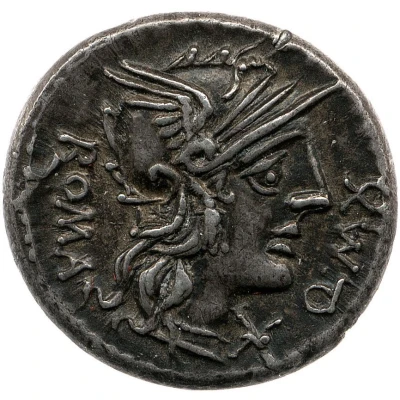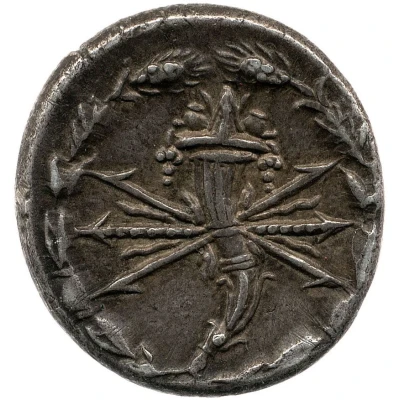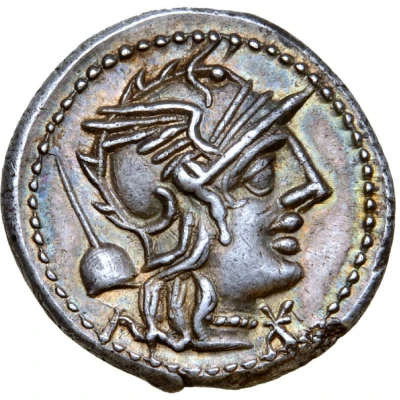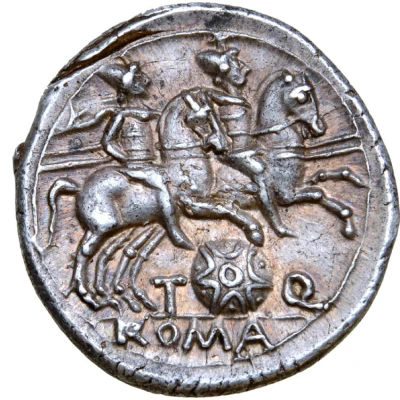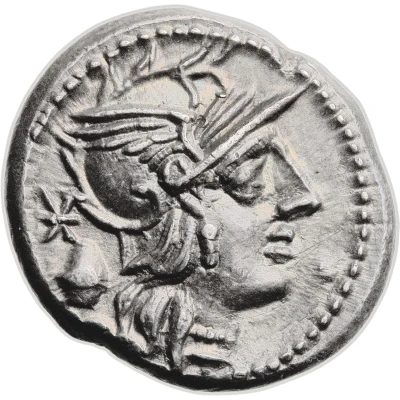
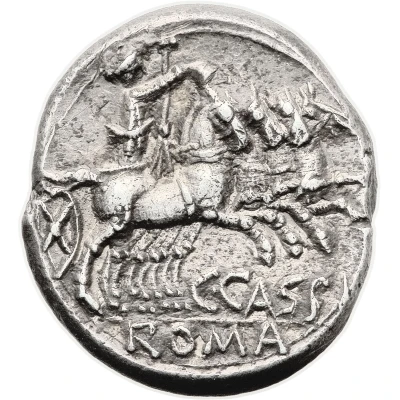

© Heritage Auctions
Denarius Cassia: Gaius Cassius; C•CASSI ROMA 126 BC
126 BC year| Silver | 3.88 g | 19 mm |
| Issuer | Rome › Roman Republic (509 BC - 27 BC) |
|---|---|
| Period | Republic (509 BC - 27 BC) |
| Type | Standard circulation coin |
| Year | 126 BC |
| Value | Denarius (1) |
| Currency | Denarius of 16 Asses (141 – 27 BC) |
| Composition | Silver |
| Weight | 3.88 g |
| Diameter | 19 mm |
| Shape | Round (irregular) |
| Technique | Hammered |
| Demonetized | Yes |
| Updated | 2024-10-06 |
| Numista | N#66662 |
|---|---|
| Rarity index | 92% |
Reverse
Libertas in quadriga marching right, holding reins and rod (vindicta) in left hand and pileus in right hand.
Moneyer mark in field under horses.
ROMA in exergue.
Script: Latin
Lettering:
C•CASSI
ROMA
Translation: Gaius Cassius
Comment
The gens Cassia was a Roman family of great antiquity originally patrician, but all of the members who appear in later times were plebeians. The first of the Cassii to obtain the consulship was Spurius Cassius Viscellinus, in 502 BC. He was the proposer of the first agrarian law, and was put to death by the patricians. The Cassia gens was reckoned one of the noblest in Rome; and members of it are constantly mentioned under the Empire as well as during the Republic.Interesting fact
The Denarius coin , which was issued during the Roman Republic, features a portrait of Gaius Cassius, a Roman politician and military leader, on one side, and an image of the goddess Roma on the other. This coin was minted during a time of significant political and social change in Rome, as the Republic was transitioning from a system of patrician rule to a more democratic system, and the image of Roma on the coin may have been intended to symbolize the unity and strength of the Roman state during this period.
